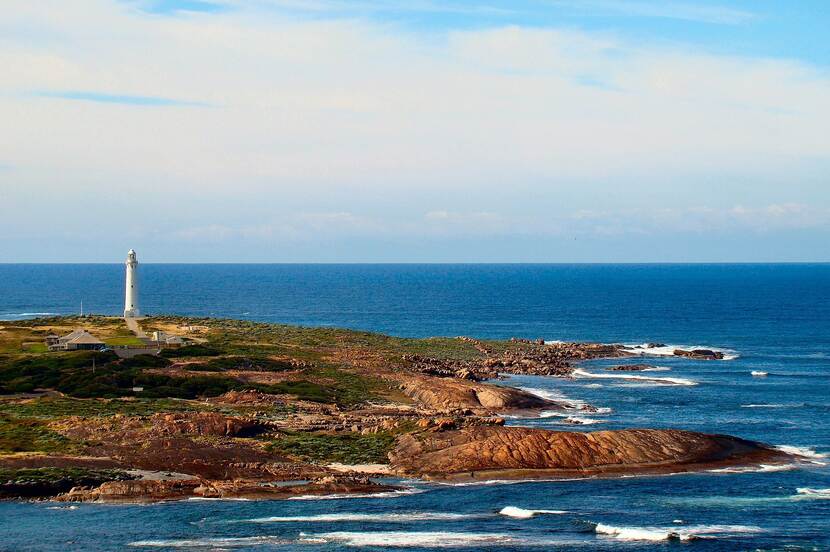400-year anniversary of the discovery of Cape Leeuwin
Weblog
Four hundred years ago, the most southwestern cape of Australia was charted: Cape Leeuwin. This was done in 1622 by the crew of the Dutch East India Company (VOC) vessel Leeuwin – the first European ship that visited and charted this place in Australia. The land was already inhabited by Aboriginal people for about three thousand generations, so the ‘discovery’ by the Leeuwin is relative in that context.
The ship never touched land and will probably have stayed at a safe distance from the treacherous rocks. Yet this process of charting did mean that this little piece of land slowly became more known to the VOC and the Dutch people. More information was gathered about the largely unknown Zuidland, Land van Eendracht (old Dutch names for parts of Australia) and now the Land van de Leeuwin as well. The VOC’s enthusiasm was not particularly great. The land did not promise to benefit the largest private company in the world, and no colony was established.

Festivities 400 years Cape Leeuwin
Festivities took place on Sunday, October 30 to commemorate this historical event from 1622. Cape Leeuwin is a special location. Two oceans merge here: the Pacific and Indian Oceans. The late 19th century lighthouse offers a spectacular view on these waters. The weather was not particularly great on the 30th: heavy winds and rainfall. Weather in which the Cape should usually be avoided, but not now.
As part of this day, the Dutch ambassador Marion Derkx revealed a plaque commemorating the event in the presence of the governing board and many inhabitants of the Shire (the municipality) and the indigenous Aboriginal inhabitants of the area – the Wadandi. The plaque has been translated into three languages: the original language of the Wadandi, English and Dutch.
Asides from that I spoke about the discovery of Cape Leeuwin together with professor Jeremy Green, former head of the Western Australian Museum in Perth. In a double interview we went deeper into Dutch shipping in the 17th century, the voyages of discovery, but also what this discovery meant for the Wadandi. Their perspective was provided by Zacc Webb in the introduction of this interview, who represented the Aboriginal inhabitants with his contribution. Historian Nonja Peters also spoke about the historical research that she conducted together with Menno Leenstra into the ship Leeuwin during which they discovered the name of the skipper – Jan Fransz. van Hoorn. The room in Augusta, Margeret River, was packed to the brim and the lecture was received with much enthusiasm.
It was a very successful weekend in which it became clear that a single event in the past can have a profound impact on a population, even on the identity of an area. A nature reserve, a moving company, a winery and many more businesses and locations have been named after the ship Leeuwin. With the co-operation of the inhabitants of the Shire, the board and local businesses it turned out to be a successful day that deserves a follow-up.
Cooperation with Australia
The Cultural Heritage Agency of the Netherlands cooperates in many ways with Australia in managing maritime heritage. This page offers more information about current projects in Australia. You can also listen to the interview on the co-operation between both countries and what it’s like to be a maritime archaeologist that Martijn Manders gave to SBS Dutch during his visit to Australia.